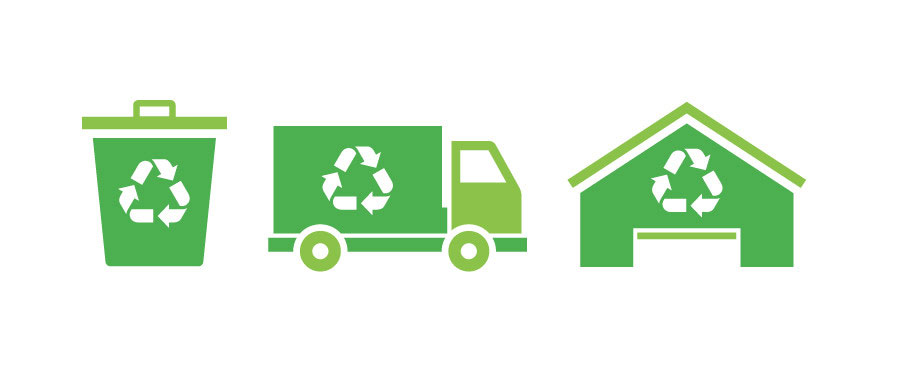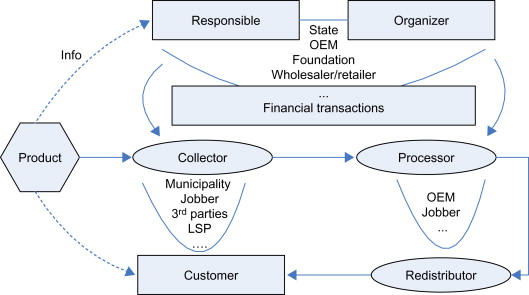Reverse Logistics
Who is Who in Reverse Logistics
 Graphics courtesy of Yusen LogisticsOpens in new window
Graphics courtesy of Yusen LogisticsOpens in new window
There are several viewpoints on actors in reverse logistics. We can make a distinction between
|
Some of the players are responsible for or organize the reverse chain, while other players simply execute tasks in the chain.
The final player role we have to add to this is the accommodator role, performed by both the sender/giver and the future client, without whom recovery would not make much sense. Any party can be a sender/giver, including customers.
The group of actors involved in reverse logistic activities, such as collection and processing, are independent intermediaries, specific recovery companies (e.g. jobbers), reverse logistic service providers, municipalities taking care of waste collection, and public-private foundations created to take care of recovery.
 Figure X-5. Who is who in reverse logistics | Credit: ScienceDirectOpens in new window
Figure X-5. Who is who in reverse logistics | Credit: ScienceDirectOpens in new window
|
Each actor has different objectives, e.g. a manufacturer may do recycling in order to prevent jobbers reselling his products at a lower price. The various parties may compete with each other.
This viewpoint is made clear in Figure X-5. The parties at the top of the diagram are either responsible or made responsible by legislation. They are from the forward chain, like the OEM.
Next we also have parties organizing the reverse chain, which can be the same parties, foundations (in the case of companies working together), or even the state itself. Below these parties we have the two main reverse logistic activities, collecting and processing, which, again, can be done by different parties. After that, products are redistributed to the market.
The Series:
- What Is Reverse Logistics?Opens in new window
- Forces Driving Companies to Engage in Reverse Logistics (Why-drivers)Opens in new window
- Reasons for Products Being Returned in the Supply Chain(Why-reasons)Opens in new window
- Reverse Logistics Processes: How are Returns Processed?Opens in new window
- Types & Characteristics of Returned Products: What Is Being Returned? Opens in new window
- Who Are Executing Reverse Logistics Activities? Opens in new window
- Barry, J., Girard, G., Perras, C. (1993): Logistics shifts into reverse. In: Journal of European Business 5, Sept./Oct. 1993, pp. 34 – 38.
- Ayres, R. U., Ferrer, G., Leynseele, T. van (1997): Eco-efficiency, asset recovery and remanufacturing. In: European Management Journal 15, pp. 557 – 574.
- Carter, C.R., Ellram, L. M. (1998): Reverse logistics: A review of the literature and framework for future investigation. In: Journal of business logistics 19, No. 1, pp. 85 – 102.
- Elkington, J., Knight, P., Hailes, J. (1991): The green business guide. Victor Gollancz, London.
- Fleischmann, M. (2001): Quantitative models for reverse logistics. Springer, Berlin et al.
- Harrington, L. (1994): The art of reverse logistics. In: Inbound logistics 14, pp. 29 – 36.

